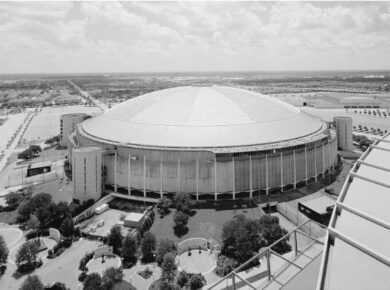This time, no post linked to a specific day. But the theme does fit perfectly with the start of the summer holidays. After two years of corona misery, amusement park fans can indulge themselves again. To give the visitors the biggest kicks, theme parks try to outdo each other with the most spectacular roller coasters.

Image: Europapark
In 1959, the Disneyland theme park introduced a design breakthrough in roller coasters with the Matterhorn Bobsleds. This was the first roller coaster to use a tubular steel track. The steel roller coasters can provide a taller, smoother, and faster ride with more inversions than a traditional wooden roller coaster.

Image Author: Unknown
Unlike conventional wooden rails, which are generally formed using steel strips mounted on laminated wood, tubular steel can be bent in any direction, which allows designers to incorporate loops, corkscrews, and many other maneuvers into their designs. Most modern roller coasters are made of steel, although wooden roller coasters are still being built along with hybrids of steel and wood.

Photo: Facebook / Theme Park Review
Almost all world records for tallest, fastest, and longest coasters are currently held by steel roller coasters. The fact that fewer supports are needed means steel roller coasters have made a large variety of features possible, such as loops, barrel rolls, corkscrews, zero-G rolls and beyond 90° drops. One of the main producers of these spectacular structures in Europe, is the Belgian steelwork company CSM Steelstructures.

Author: Jazon88
Ever heard about ‘Tiger and Turtle – Magic Mountain‘? It is an art installation and landmark in Angerpark, Germany, built in 2011. It was designed by Ulrich Genth and Heike Mutter. It resembles a roller coaster, but it is a walkway with stairs. Its vertical loop continues the walkway and stairs, but it is unwalkable and is blocked off.

Author: Avda
About the Author:

Bruno Dursin – Managing Director at Believe in Steel. Bruno has more than 30 years of experience in promoting steel & steel solutions. His clients benefit from his extensive network within the building industry.



